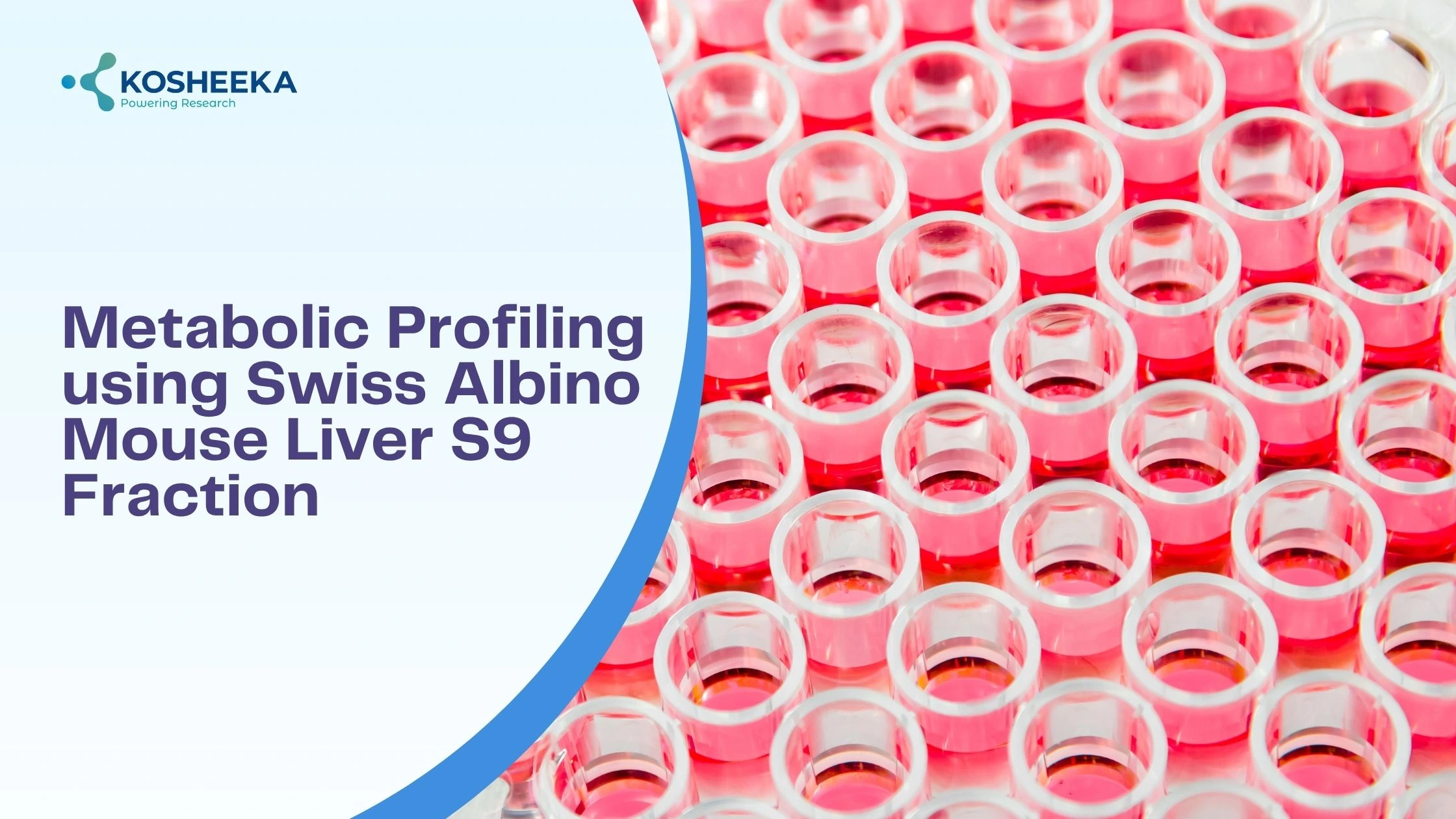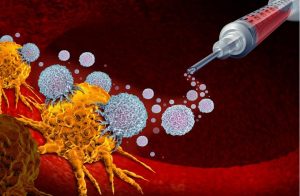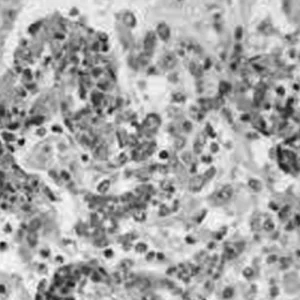Rodents, particularly mice, have been a popular animal model in biomedical research due to their ease of handling, high reproductive rate, and shorter lifespan. The study of diseases and their progression, along with the effects of novel treatment, is easier on mice. Several mouse strains have undergone genetic engineering to develop study-specific models. The Swiss albino mouse has been one of the earliest strains used in scientific pursuit. Its genetic heterogeneity offsets the uniformity in the studies but also represents the variation of a true human population. Therefore, this strain has found more applications in toxicological research. In vitro research on cells from the same strain offers consistency in data. Therefore, Swiss albino mouse liver S9 fraction is a routine in vitro tool for pharmacological research.
Swiss Albino Mouse
Swiss albino mice are outbred strains created from outbred albino males and outbred albino females by A. Coulon at Lausanne, Switzerland. Clara J. Lynch at Rockefeller Institute procured these mice from Lausanne in 1926. They are short with white fur, red eyes, large ears, and little hair on the tail. These are used to develop more mouse strains, such as SWR/J. Outbred strains are genetically heterozygous and represent the variability in the human population. With respect to inbred strains, outbred strains also show enhanced resistance to disease, increased life span, and higher litter size. This lineage has vast applications in biomedical research on metabolic and autoimmune diseases, complement fixation, tumors, and pharmacology. It is also often used in the transfer of transgenic embryos.
Swiss Albino Mouse Liver S9 Fraction
The genetic heterogeneity of the Swiss albino model has prompted its use in toxicological research. It accounts for the variability of the human population, which is absent in many other animal models. The liver is responsible for the drug metabolism through its Phase I enzymes (cytochrome P450, carboxyl esterase, flavin monooxygenase) and Phase II enzymes (UDP-glucosyl transferase, N-acetyl transferase, glutathione S-transferase). Therefore, mice hepatocytes are used to screen drugs for their ADMET (Absorption, Distribution, Metabolism, Excretion, and Toxicity) properties. These properties are crucial to assess the safety of drugs before their application in animal models.
However, the hassle with their culture, storage, and survival increases the preference towards its subcellular fraction. They are amenable to storage and automation while also being cost-effective not requiring laborious culture processes. S9 fraction containing both phase I and phase II enzymes, became more popular among other subcellular fractions for a complete metabolic profile.
The Isolation Procedure
The isolation of the S9 fraction begins with euthanization of mice and their dissection to remove the liver. A washing step including rinsing the liver in a buffer removes blood and other impurities, prior to homogenization in a cold buffer solution. The centrifugation of the homogenate at 9000 xg for 10-20 minutes yields the S9 fraction in the supernatant containing microsomes and cytosol fractions. Ultracentrifugation of supernatants can separate both these fractions.
Applications in Pharmacology
Metabolic Stability: It refers to the susceptibility of a drug or xenobiotic for biotransformation. Intrinsic clearance and half-life are the two defining criteria for metabolic stability. Higher clearance describes faster removal of drugs from the body, rendering a short time of action. A low clearance value indicates the extended duration of action but might also cause adverse effects. It enables optimization of drug dosage and duration. Since Swiss albino mice exhibit variability, thus metabolic stability on their liver S9 fraction can be more accurate for in vivo studies.
Carcinogenicity Testing: Several chemicals require the Ames test to assess their mutagenicity or carcinogenicity. However, many carcinogens are present in an inactive form and need enzymatic transformation before showing their mutagenicity. Therefore, many studies utilize Ames test in combination with liver S9 fraction to transform carcinogens.
Biotransformation: The study on the S9 fraction also determines the metabolites formed by drug transformation. These metabolites enable the analysis of possible pathways of metabolism and their potential toxicity. They also allow the modification of drugs by quantitative structure-activity relationships (QSAR) to optimize their metabolism and minimize their toxicity.
Genotoxicity: Several tests examine genotoxicity in terms of chromosomal aberration and DNA damage. Many test substances, however, do not exhibit direct toxicity. Instead, their metabolites exert the genotoxic effects. The addition of liver S9 fractions these tests assess the genotoxicity of potential drug metabolites.
Environmental Safety: Many chemicals or therapeutics pose a threat to the environment. For example, nanoparticles, also a part of therapeutic medicines, can cause ecological harm. Government authorities have mandated the use of liver S9 fractions to measure the safety of such products.
Advantages of Mouse Liver S9 Fraction
Species Specificity: Before clinical trials, preclinical investigations on two animal models—a small scale and a large scale—are necessary. Among the small-scale models, Swiss albino mice are a more precise representative of the variability of the human population. Their use in experimentation also requires in vitro studies on their cells or S9 subcellular fractions.
Easy to Use: Liver S9 fractions can be stored for longer periods and are easy to use. Cells require meticulous cultivation, whereas using microsomes and cytosolic fractions necessitates repeating identical experiments on two different fractions. The S9 fraction overcomes both hurdles, achieving an effortless and faster way for analysis.
Drawbacks of Mouse Liver S9 Fraction
Species Difference: Mice cannot replicate the human enzyme composition or concentration. Many studies have reported the difference between in vitro results and tests conducted on humans.
Inadequate enzyme activity: In comparison to other subcellular fractions, the S9 fraction has lower enzyme activity and sometimes may even suffer from loss of certain enzymes.
Moreover, S9 analysis process require further addition of cofactors. However, a complete mix of cofactors and S9 fractions is commercially available to eliminate the need for adding exogenous cofactors.
Product-Related Queries, Or Partnership Inquiries
Customized Liver S9 Fraction
Several research reports have demonstrated that liver enzymatic activities vary with age, gender, medical status, and various other physiological factors. The tailoring of S9 fractions according to the characteristics (age, gender, etc.) of the human cohort in clinical trials is possible. Mice with specific characteristics can be used for extracting the liver S9 fraction for a customized study.
Conclusion
Liver S9 fraction is a frequent tool used in drug screening studies. Its ease of storage and cost-effectiveness, combined with its automation-friendly process, has prompted its application even in industries over other available options such as microsomes, hepatocytes, etc. The mandatory preclinical studies on a small-scale model employ Swiss albino mice for their genetic variation. Their liver S9 fractions enhance reproducibility of in vitro and in vivo studies. Kosheeka is a reliable cell culture company that offers customized Swiss albino mice liver S9 fraction. Our team meticulously follows each step according to GMP guidelines to boost your toxicological research.
FAQs:
Q – What is the liver S9 fraction?
Drugs are used to be screened in liver hepatocytes as they are the primary site of drug metabolism. The liver S9 fraction is a liver extract containing all the drug-metabolizing enzymes, comprising both microsomes and the cytosolic fraction.
Q – What are Swiss albino mice?
These are an outbred strain developed in Switzerland. They have a short body covered in white fur, red eyes, and large ears.
Q – What are the applications of Swiss albino mice?
They are employed primarily in toxicological and pharmacological research due to their genetic heterogeneity, which represents the variation in the human population.
Q – What is the customization of Swiss Albino Mice Liver S9 Fraction?
Mice liver enzymes change in activity and composition depending on various physiological factors. These factors can be tailored according to the research study, and a customized S9 fraction can be supplied.



